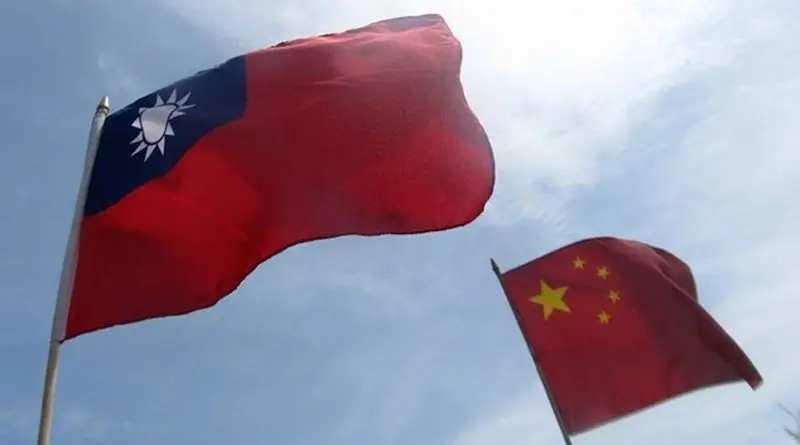What Role For Taiwan In Act East 2.0? – Analysis
By IPCS
By Ashutosh Nagda*
On 11 January, Tsai Ing-wen was re-elected as president of Taiwan in a landslide victory, with a continued legislative majority for her Democratic Progressive Party (DPP). Tsai and the DPP are expected to further promote policies that decrease Taipei’s dependence on Beijing, and diversify its trade and investment partners. Is there then an opportunity for Taiwan’s New Southbound Policy (NSP) to deepen its engagement with India’s Act East Policy (AEP)?
Taiwan’s export-oriented economy and interest in diversifying traditional targets of investment under the NSP make it a natural collaborator for India. However, any such collaboration will have to take into account sensitivities linked to the India-China relationship, and India’s adherence to the ‘One-China’ policy.
Convergences
President Tsai launched the NSP in August 2016 to mark the third phase of the 1994 Go South Policy. It aims to reinvigorate and expand Taipei’s ties with South and Southeast Asia, Australia, and New Zealand; diversify trade; and move away from China. While India was not central to the first two phases of Taipei’s Go South Policy, it has now become an integral part of Tsai’s NSP. According to Taiwan’s representative to India Chung Kwang Tien, India is “not one of” but rather “the most” important country for this policy’s implementation.
India’s AEP – announced in 2014 – is an upgraded version of its Look East Policy, with the objective to promote economic cooperation and cultural ties, and develop strategic relationships with “the extended neighbourhood in the Asia-Pacific region.” AEP, in its first phase, only looked at ASEAN countries. While Japan and South Korea have been engaged under the AEP owing to their strategic and economic importance, Taiwan has been on the sidelines because of Indian concerns about a Chinese reaction.
Economics is at the crux of both NSP and AEP. However, New Delhi’s engagement with Taipei in this regard has not been promising. In the last five years, trade between the two countries fluctuated within the range of US$ 5 to 7 billion. For example, the trade numbers went up from approximately US$ 6.3 billion in 2017 to US$ 7.3 billion in 2018, and then down to US$ 5.8 billion in 2019. Yet, the two countries are aiming to achieve a trading volume of US$ 10 billion by 2020.
Taiwan’s geostrategic location – it sits exactly where Northeast Asia meets Southeast Asia – can have “significant consequences” for India’s AEP and its emerging role in the Indo-Pacific. Taipei has shown increasing interest in the Indo-Pacific, with its Ministry of Foreign Affairs launching the Indo-Pacific Affairs Section as a component of the NSP. At the first Taiwan-ASEAN Dialogue in 2016, President Tsai announced Taiwan as “an important member of the Asia-Pacific region” and accepted its “responsibility to contribute to regional peace, stability and prosperity.” There is thus a clear overlap between New Delhi and Taipei’s respective visions for the region.
In the Shadow of the Dragon
The Chinese shadow looms large over any potential up-gradation in India-Taiwan ties. China maintains its ‘One China, two systems’ principle with regard to Taiwan. While India has respected this principle, there has been no India-China joint statement on the subject since 2010.
India’s outreach to Taiwan takes place in the backdrop of its relationship with China; whether it is on the respect for territoriality and sovereignty, or India recently seeking to alter the rules of bilateral engagement. These circumstances have led to objections from both China and Taiwan. For example, Beijing objected to a delegation of Taiwanese women parliamentarians visiting India in 2017. Taipei, on the other hand, has raised concerns about New Delhi conducting its relations with Taiwan within the ambit of ties with Beijing. It has categorically said that it had no objections to India making friends with any country in the world, but “not at the cost of Taiwan’s relations with India.”
In this context, Taiwan’s NSP has the possibility of opening up space for New Delhi to engage with Taipei without irking Beijing. Although Taiwan is seeking to move away from China through its NSP, Tsai has categorically stated that “it is not about competing with China.” This was further emphasised by James Huang, director of the NSP, who said that the policy did “not run counter to improving trade relations with China and the two can even be complementary.”
If, in the immediate future, any prospective engagement between the two focuses primarily on economics rather than strategic and defence cooperation, both India and Taiwan could keep the Chinese backlash to a minimum.
Conclusion
The AEP and NSP in their respective second terms give India and Taiwan immense space to collaborate and strengthen ties. Taiwan’s specialisation in electronics, machinery, and technology can add value to India’s healthcare and agriculture sectors, smart city projects, solar power, and the Make in India initiative. Taipei is already proactive in its approach to India. India must similarly consider the importance of loosening its constraints and adopting a more pragmatic approach – one that also takes Beijing’s potential displeasure – in return.
*Ashutosh Nagda is Researcher with IPCS’ South East Asia Research Programme (SEARP).

